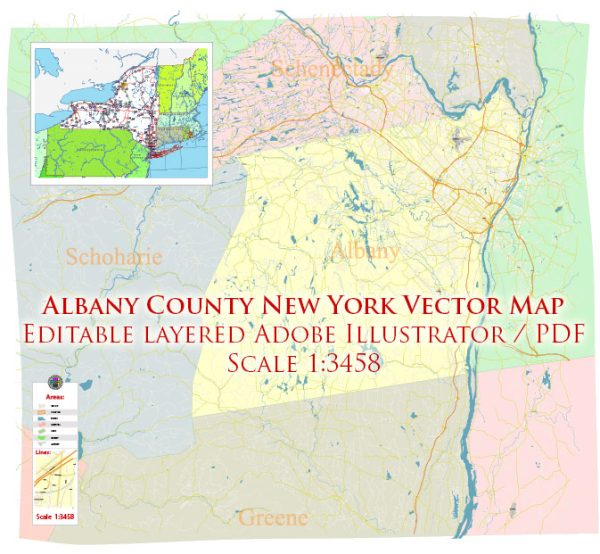Albany County, located in the state of New York, has a rich and diverse history of development that spans several centuries. Here’s an overview of its historical development:
- Native American Settlements: Prior to European colonization, the area that is now Albany County was inhabited by various Native American tribes, including the Mohican and Mohawk people. These indigenous communities had established settlements and trading networks in the region.
- Dutch Colonial Period: In 1609, the Dutch explorer Henry Hudson reached the area, which was then part of the Dutch colony of New Netherland. The Dutch established Fort Orange (now Albany) in 1624 as a fur trading post and a center for trade and commerce along the Hudson River.
- English Control: In 1664, the English captured New Netherland, and the region, including Albany, was ceded to the English. The city was renamed Albany in honor of the Duke of Albany, who would later become King James II.
- Colonial Era: During the colonial period, Albany became a hub for trade, transportation, and government in the region. It was strategically located at the confluence of the Hudson and Mohawk Rivers, making it an important center for commerce and a key link in the fur trade.
- American Revolution: Albany played a significant role in the American Revolutionary War. The city served as the temporary capital of New York, and the Albany Plan of Union, a precursor to the Articles of Confederation, was discussed at the Albany Congress in 1754.
- Erie Canal and Transportation: The construction of the Erie Canal in the early 19th century further boosted Albany’s prominence as a transportation and trade center. The canal connected Albany to the Great Lakes and helped facilitate the movement of goods and people.
- Industrialization: In the 19th and early 20th centuries, Albany developed into a thriving industrial city with a strong manufacturing base. Industries such as brewing, steel production, and textile manufacturing contributed to the local economy.
- Government and Education: Albany also became a significant center for government and education. The city is home to the New York State Capitol and numerous educational institutions, including the University at Albany, SUNY.
- 20th Century and Beyond: Albany continued to evolve as a regional hub, with a diversified economy, including government, healthcare, education, and technology sectors. It is the state capital and an important political and administrative center.
- Cultural and Historical Heritage: Albany County is home to numerous historic sites, including the Schuyler Mansion, Ten Broeck Mansion, and the Albany Rural Cemetery. The region has also been associated with famous figures in American history, such as Alexander Hamilton and the Schuyler family.
Today, Albany County is known for its historical heritage, government institutions, and a diverse economy that reflects its evolving role in the state and the nation. It continues to be a vibrant and culturally rich part of New York State.


 Author: Kirill Shrayber, Ph.D.
Author: Kirill Shrayber, Ph.D.